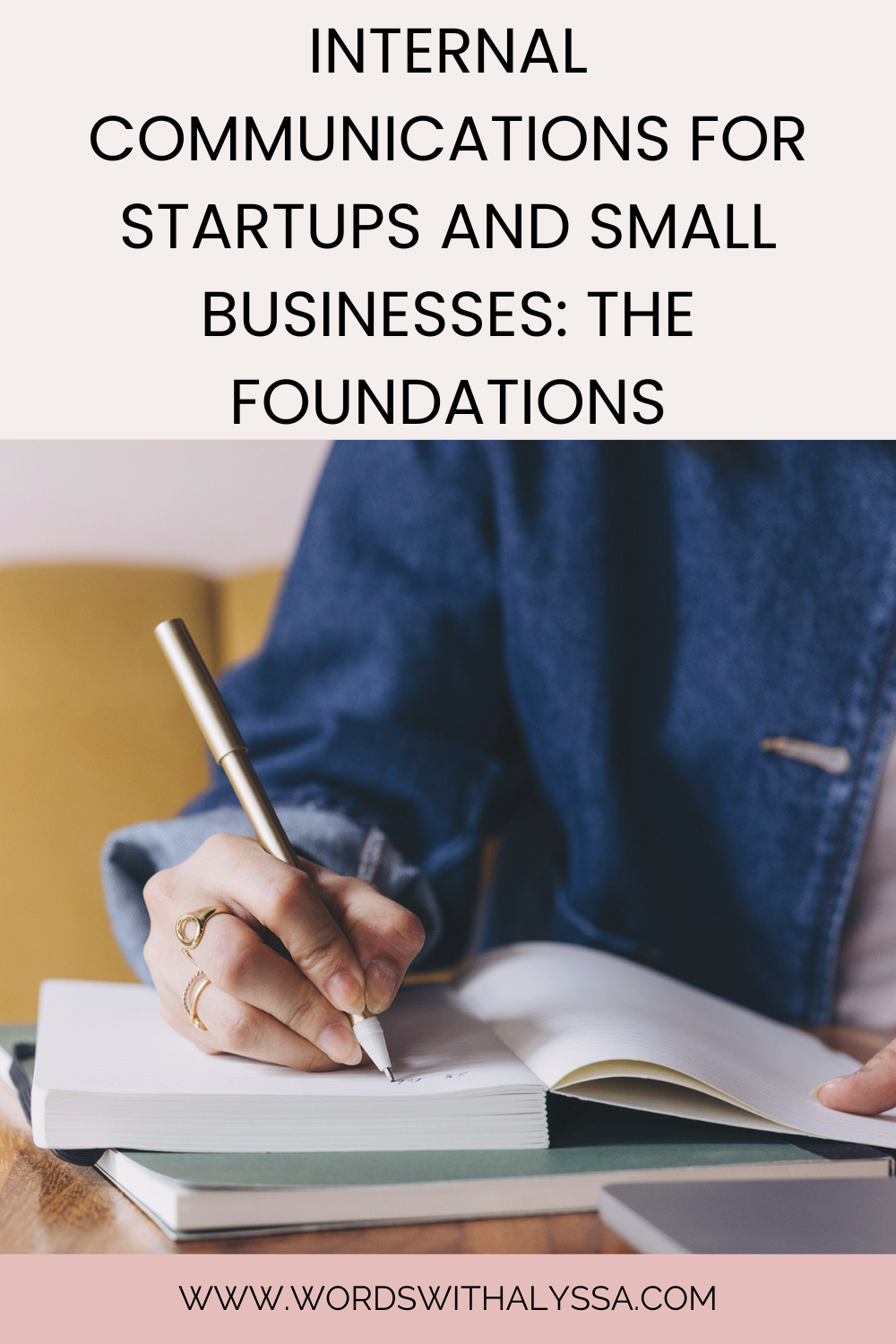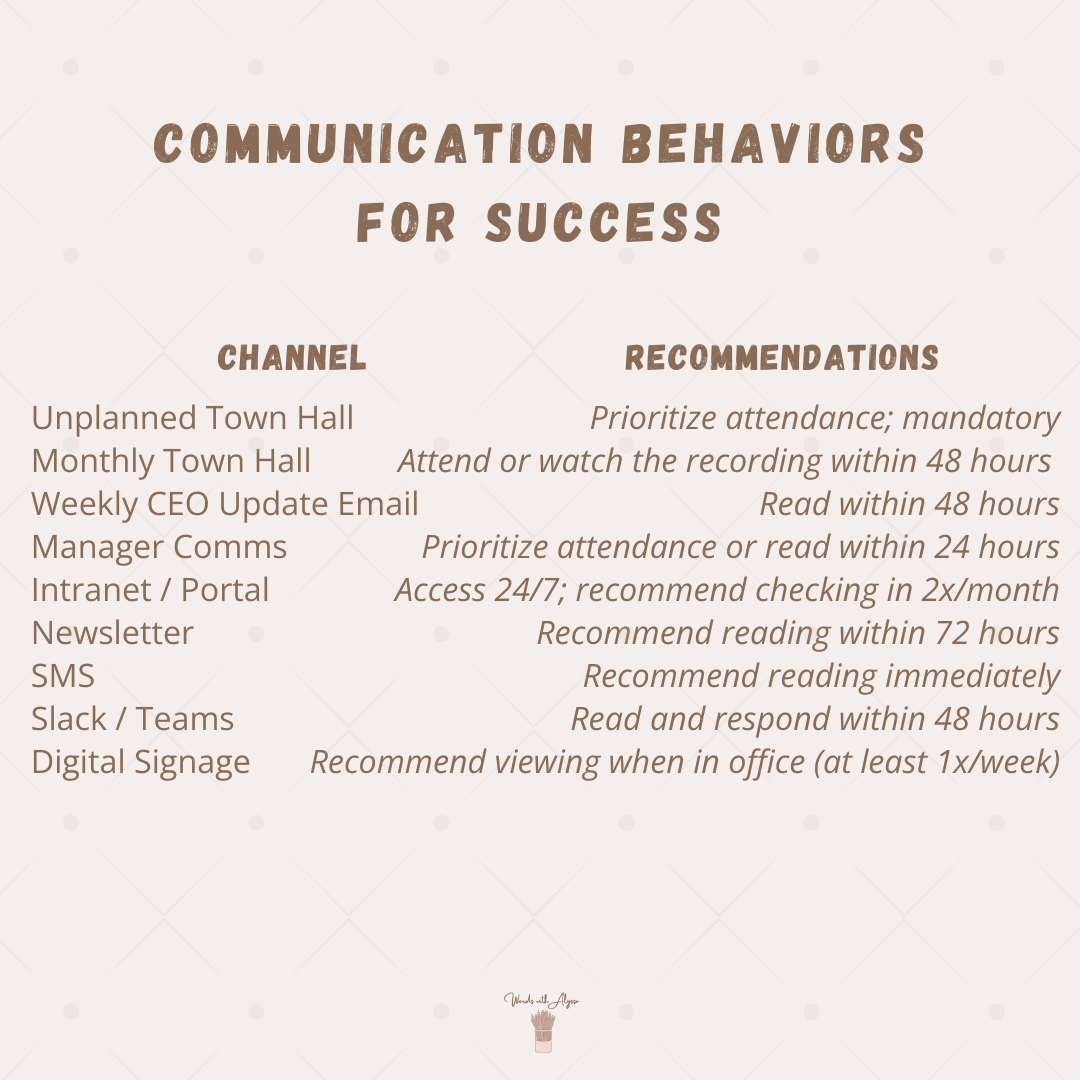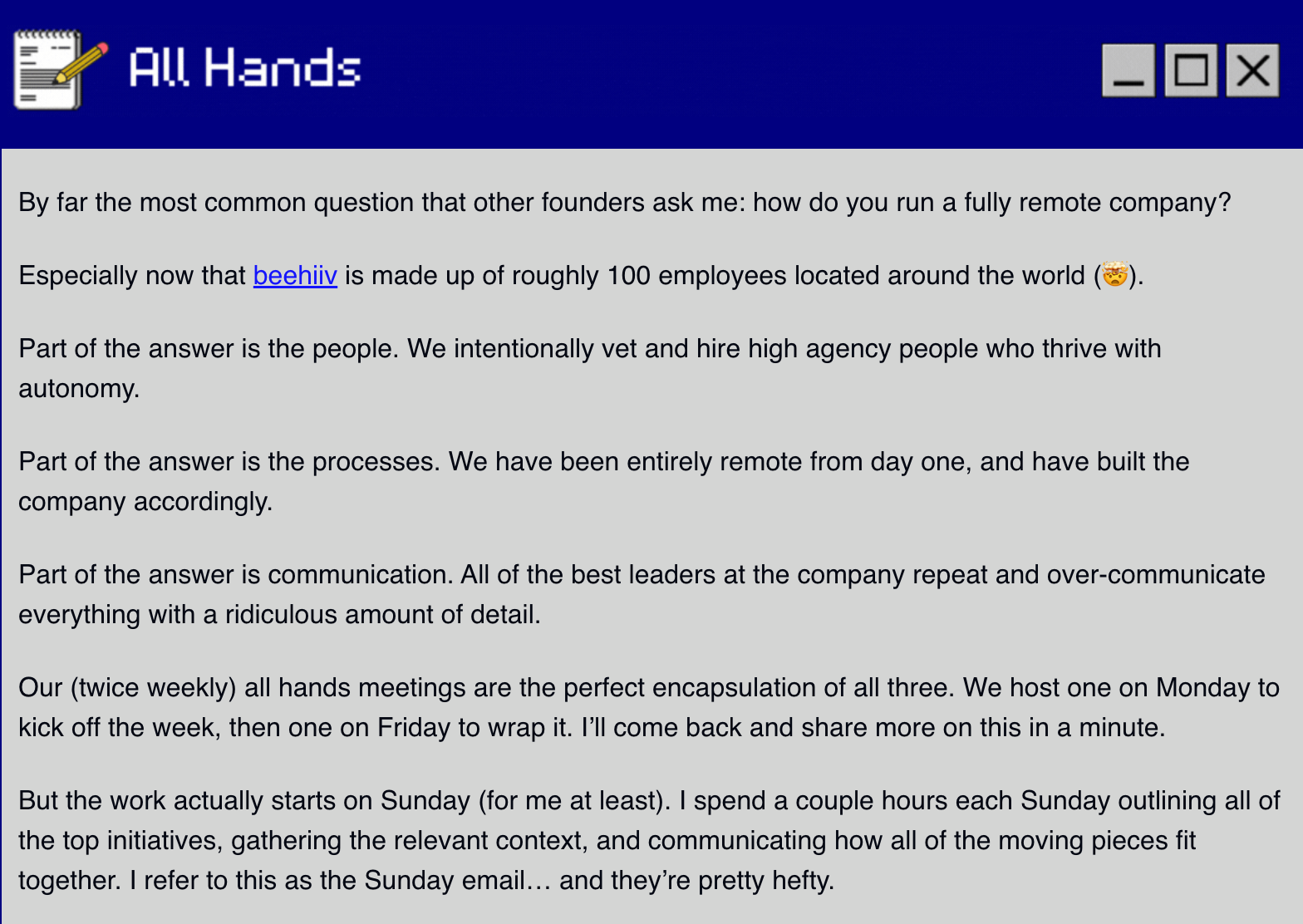
Internal Communications for Startups and Small Businesses: The Foundations
When you think about internal communications teams or professionals, where do they work? Large organizations? Corporations with hundreds (or even thousands) of employees? Enterprises with talent spread across the globe?
Effective internal communication isn’t something that only organizations and enterprises deserve. And communication doesn’t become problematic or ineffective only when you add sprawling teams and multiple offices into the fold. Your team could be small and mighty, yet struggling with poor internal communications.
Even the smallest teams benefit from clear, structured, and intentional communication. In fact, good internal communication for start-ups and small businesses often makes the difference between agility and pure chaos.
In this post, I’ll explain why internal communications matters (no matter how small your team is!), how to get started (spoiler alert: you probably already do most of these things), and share the non-negotiables that will help set your team up for success in years (and growth stages to come).
Why internal communications matter for startups and small businesses
For internal communications in small environments, there are several specific reasons an effective strategy is beneficial. Besides general benefits like organizational connection, clarity, and contribution to employee engagement, internal communications are essential for startups and small businesses because:
Avoiding early-stage misalignment is critical
In particular, startups frequently change direction and shift their focus for various reasons, including market changes, merger and acquisition (M&A) opportunities, seizing opportunities, and many more. While these changes offer many benefits to growing teams, they also present more opportunities for misalignment, miscommunication, and misunderstandings.
As the organization grows, misalignment can fester below the surface. And when teams are misaligned and moving quickly, team members might duplicate work, work on the wrong projects, move in different directions, and cause friction that spreads.
Early ineffective comms systems create more headaches down the road
If an organization chooses not to prioritize internal communications systems in its infancy, when it focuses on internal communications, the individual(s) responsible often have to clean up the effects of previous ineffective systems. With an unstable foundation from the get-go, the first task for your internal communications person or team involves assessing (and many times, reworking) the current structure and strategy (and sometimes, neither of these may exist).
Not only is it challenging for the individual(s) working in these roles, but managing the path of pursuit toward more effective internal communications alongside headcount growth creates bottlenecks, tension, and ongoing systemic challenges. Startups and small businesses that plan to scale need internal communications systems that can grow with them. (And even if you aren’t planning to grow now, why not prepare?
Building your company culture starts on day one
Internal communications play a crucial role in shaping company culture, as they work in tandem to create the overall employee experience. Let me be clear that internal communications doesn’t equal company culture, but the tangential relationship is part of the larger employee experience and engagement picture.
That means you shouldn’t wait to think about or shape your company culture until your organization is larger. In fact, you define and outline your culture, values, and beliefs as an organization beginning on day one.
Consistent and effective internal communication reinforces transparency, collaboration, and trust. It brings team members with you on your growth journey, offers clarity that enables them to thrive in their roles, and shapes the day-to-day interactions and inner workings of the company.
How to get started with internal communications in startups and small businesses
If you’re ready to prioritize internal communications in your startup or small business, here’s where I recommend starting:
Define how your team should use tools and channels
When your team is small, your company doesn’t need lots of fancy internal communication tools and apps. Not to mention that introducing too many tools can cause more harm than good, especially when they have extensive feature sets your team won’t take advantage of.
You likely already have some of the essential tools in place, including:
- Chat apps for daily updates and collaborative communication (e.g., Slack, Microsoft Teams)
- Project management tools (Asana, Notion, etc.) for task management and project planning
- Company knowledge management tools (Notion, Guru, etc.) for providing a single source of truth and a centralized knowledge base
- Email and staff meetings for formal announcements and team gatherings
If these tools work well for your business, there’s nothing wrong with that! However, the critical piece most teams overlook is defining how they will use these channels and what team members should expect from each.
Communication falls short when we don't understand:
- Where to find information (or how to use it)
- What to expect from each source of communication
- WHY each channel matters
- How to interact with the communication we receive
Define your organization's communication channels, their purpose, whether they're synchronous or asynchronous, and behavioral recommendations to include in your employee onboarding experience.
Here's a visual example of how this could look as a resource and some templated language you can use for a more formal communications guidelines document:


Rather than making assumptions about channels and why they work or don't work, consider that team members may not understand the purpose of the organization's communication channels or what the organization expects from them regarding how to use them.
Establish communication cadence (and stick to it)
One of the best aspects of being on a small team is the greater flexibility and agility in process development and collaborative efforts. Timelines can (and often do) change frequently as work and priorities evolve.
But one timeline cadence that shouldn’t fluctuate frequently is that of your internal communications. It’s crucial to establish a consistent cadence for your internal communications and adhere to it to create repeatable, predictable rhythms, thereby preventing communication gaps.
It’s not enough to assume that “everyone is in the loop” all of the time, even if you work in a small office and feel like you’re sharing information with everyone. As companies grow, people inevitably miss essential messages. And when internal communications spread by word of mouth, you run the risk of sharing the same message in multiple ways, which can cause confusion.
Predictable rhythms look and feel like:
- Weekly standups (synchronously or asynchronously) or emails at the beginning of the week for alignment
- Monthly all-hands (ideally on the same day or around the same time) each month
- Quarterly team strategy sessions for developing and aligning around the company’s long-term direction
Tyler Denk at beehiiv* does an incredible job of this. With over 100 employees globally, this remote team relies on their twice-weekly all-hands meetings — one on Monday to kick off the week and one on Friday to wrap it up.
Tyler shared his entire process, including the goals of beehiiv’s all-hands meetings, in this issue of Big Desk Energy.

5 non-negotiable internal communication habits for startups and small businesses
To establish a solid and stable internal communications foundation for your team, keep these non-negotiables in mind. These habits can make or break the communication experience, especially as your startup grows or your small business changes.
1. Create a shared source of truth and update it often
Every small team has that person who always knows where to find the latest version of company files, what the most recent status updates are, and where to go when you can’t find what you’re looking for. We love these team members and their incredibly memory-storing abilities, but overrelying on this person to share information with others creates a bottleneck (also known as the bus factor) and communication issues, especially if and when this individual (or even a group of them) leaves the company.
You need a centralized hub and source of truth that employees can count on. Whether it’s an organized Google Drive system (this is fine, but often requires a lot of digging and detailed naming conventions to be effective), Notion, Guru, or something else, your team’s collective memory needs to live somewhere outside of the minds of the brilliant rememberers.
If it matters to the business, it lives in the hub. If it’s not in the hub, it doesn’t exist. Treat this space like your team’s internal library — tidy, reliable, and always accessible.
2. Write it down, even if you talk about it
Brief conversations and calls are the lifeblood of small teams. When you’re in person, maybe you shift a deadline while grabbing your morning coffee with a colleague. Perhaps you join a Zoom meeting about one project, spend the last three minutes discussing something else entirely, make a decision about the last-minute conversation topic, and fail to realize not everyone who needs to know about the change is in the virtual meeting room.
Make it a habit to document the decisions, outcomes, and new directions that emerge from any conversation. That can look like:
- Sending a Slack message to everyone working on the project
- Updating your project tracker with a note
- Adding the update to the agenda for an upcoming meeting
- Some combination of all of the above
Documentation is key.
3. Avoid overreliance on one channel
Every team has a “favorite” channel. Perhaps it’s Slack, or maybe it’s email. However, when a majority of your communications reside in one place, essential updates often get buried under GIFs, small talk, or endless reply-all chains. Not to mention, it can be nearly impossible to find the information you need when you need it.
A better approach is to:
Give each channel a clear use case and role
Chat apps are for quick questions and banter. Email (or newsletters) is for announcements that need staying power. Project management tools are for tasks and deadlines. Documentation tools are for, well, documentation.
Here’s an example of how you can add structure and definition to your channels:
Channel Definition Example
Email works best for...
- Formal, detailed messages that require attaching additional documentation
- Non-urgent messages that don't require an immediate response
- Decisions where written history is critical for knowledge sharing
Formal Guidelines Language Examples
[Email] is our primary form of communication. Team members should respond to internal emails within two business days of receipt. This ensures that our team can make timely decisions.
The [chat app] helps us stay connected and is best for quick, real-time communications. Team members should respond to messages within one business day of receipt. This ensures that our team can make timely decisions. We encourage all team members to update their status regularly to communicate their availability to others.
Once you define your channels and use cases, incorporate them into the employee onboarding experience so everyone is on the same page from the get-go.
Create a centralized location to reference the most critical past internal communications
Don’t make people dig for important internal communications information. If email is one of your central channels, that’s okay, but it’s time-consuming to dig through past emails and find precisely what you need in the moment.
Instead, use a tool like Google Sites or Guru to create a basic internal wiki page where you can easily link out to communications your team members will likely want to reference or revisit.
4. Use rituals to strengthen your connections
Small, consistent communication rituals keep people connected and reinforce your company culture as you build it. A Monday kickoff email can set the tone for the week. A Friday “wins” roundup can celebrate progress (and give everyone something to smile about). A monthly Ask Me Anything (AMA) with the founder can make leadership feel accessible, even in the busiest seasons.
Think of rituals as the social glue that holds your communication system together. They don’t need to be elaborate. Even a recurring Slack thread with the question, “What’s one win from this week?” can facilitate camaraderie and prevent the team from slipping into a purely task-oriented mindset.
5. Pause and audit your communications
Your internal communications must evolve in tandem with your business as you grow, scale, or adapt to new ways of working. What worked perfectly when you had five people in a coworking space may become a nightmare with 15 employees across two locations. Don’t forget to audit and tweak your communications as you go rather than waiting until things are no longer working and you’re hundreds of employees deep.
A quarterly “comms audit” doesn’t need to be painful. Ask your team:
- What tools do we actually use?
- What meetings feel useful (and which feel like an email could replace them)?
- Is anyone consistently missing essential updates?
- Can you locate the necessary information to perform your job?
- Where can we as leaders improve our communication?
FAQs on internal communication for startups and small businesses
Even with the best intentions, small business owners and startup founders often run into the same questions when it comes to keeping their teams aligned. Do we really need a strategy this early? What tools should we use? How much is too much communication? Below are some of the most common (and most useful) answers to help you build a system that works for your team without the corporate bloat.
What’s the best communication tool for startups?
There’s no one-size-fits-all answer, but most small businesses benefit from a stack that balances speed, clarity, and permanence.
A chat tool like Slack or Microsoft Teams is great for quick updates, while a project tracker helps keep tasks from slipping through the cracks. While you can get away with using Gmail and Microsoft Outlook, there is one tool I love and recommend for businesses of all sizes, but especially startups and small businesses (because it’s the tool I wish I had when I was in-house): Workshop*.
When should a small business formalize its internal communication strategy?
It’s never too early to start! And you don’t have to set up overly formal processes, either. Once you have more than a handful of employees, it’s time to set some communication ground rules. This is as simple as defining:
- Communication channels and expectations for usage
- The cadence of your regular internal communication
- Where different types of information should go
The earlier you formalize these basics, the easier it will be to scale without chaos.
How do you strike a balance between transparency and information overload?
Sharing everything with everyone sounds transparent, but it quickly leads to inbox fatigue and eye rolls. Employees don’t need to see every email thread, but they do need to be aware of the decisions and direction that impact their work.
One practical rule: if it impacts the company’s goals, team priorities, or individual tasks, share it. If it’s just noise (e.g., ten drafts of a logo), summarize the outcome instead of flooding people with details.
What’s the biggest mistake startups and small businesses make with internal communication?
Too many small teams assume that everyone is “in the know,” simply by way of proximity or ease of ability to disseminate information. However, even in a five-person team, a lack of clarity can lead to duplicated work, missed deadlines, and communication gaps. On the other hand, some overcorrect and create too much structure, resulting in endless meetings, lengthy emails, and tool overload.
The sweet spot is a lightweight system with consistent habits—no corporate bureaucracy required.
How do I know if my internal communication system is working?
Signs your system is working:
- Everyone knows the company’s top priorities
- There are fewer meetings spent rehashing the same topics
- New hires ramp up quickly thanks to proper documentation
- Employees say they feel “in the loop” (leaders don’t just assume they are)
In other words, signs of alignment indicate that your current system is working as intended. Now the next question is, is it scalable for your organization’s next phase of growth? And if not, how can you plan for what’s to come?
0 Comments Add a Comment?